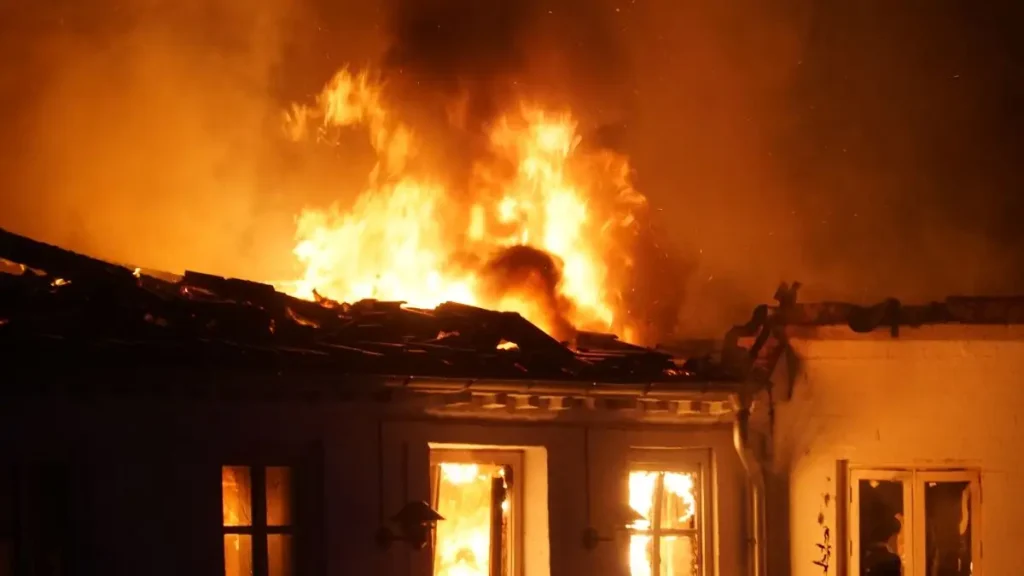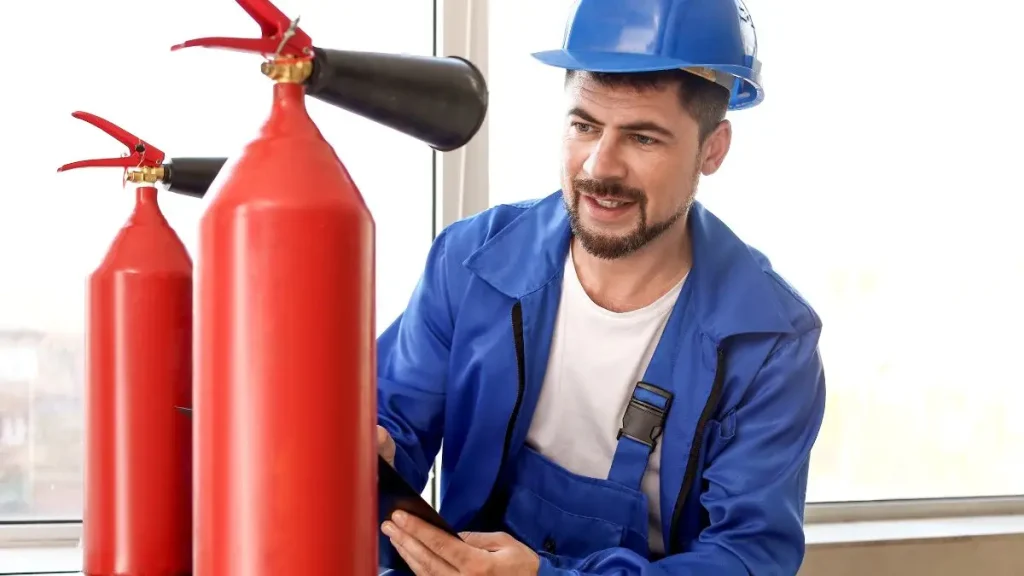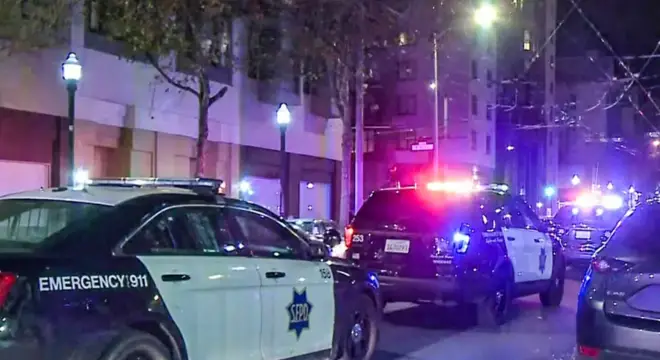Roof Collapses During House Fire In DeKalb County Fire
I woke up today to yet another troubling fire incident, this time in Stone Mountain, DeKalb County. Just after 1:30 a.m. Tuesday, a house on Malvern Boulevard went up in flames—and it wasn’t just any routine fire. According to multiple reports, the fire quickly escalated when the roof of the home collapsed before firefighters could even get inside.
They had no choice but to fight the flames from outside. The structure was simply too unstable. When a roof gives out that early in a blaze, it’s a clear sign the fire’s intensity was extreme right from the start.
Thankfully, no one was inside the home. And while that’s a relief, it doesn’t take away from how serious the situation was. The entire second floor was heavily damaged, and responders say the bulk of the fire tore straight through the roof.
This isn’t just another fire story—it’s a reminder of how fast things can spiral out of control. Especially when we’ll later find out what was inside the house.
Firefighters Held Back — The Roof Made It Too Risky
If you’re wondering why no one rushed inside to save the structure, here’s the truth: they couldn’t.
When firefighters arrived on scene, they immediately saw the roof had already started collapsing. Imagine showing up ready to battle flames—and being forced to hold back. According to Fox 5 Atlanta, the home was simply too unstable to enter safely.
The fire had already eaten through key structural areas, and there was no guarantee the roof wouldn’t come crashing down any second.
So instead of going inside, crews had to fight it defensively, from the outside, under risky conditions. That’s not just frustrating for first responders—it’s dangerous. When a roof collapses, it traps heat, smoke, and gases, making the fire even harder to control.
If you live in an older or cluttered home, it’s a wake-up call. A roof doesn’t need hours to cave in. Sometimes, all it takes is a few minutes.
Ammunition Inside the House Fueled the Fire’s Fury

Here’s where it gets even more intense: the fire wasn’t just spreading on its own. It was being fed from inside—by stored ammunition.
Yes, you read that right.
According to Atlanta News First, officials believe that ammo kept inside the home played a major role in how fast and aggressively the fire spread. Firefighters heard pops and small explosions as they tried to approach, which made it impossible to get close. Bullets were literally going off due to the heat.
That kind of situation puts firefighters at huge risk. And it also raises a serious question: do you know what’s stored in your own attic, basement, or garage? If you—or someone you know—keeps ammunition at home, it’s crucial to store it safely and far from anything flammable.
Because once a fire starts, it’s not just about saving a home anymore. It becomes about surviving the next few minutes.
Stories like this are being tracked and shared live in local safety-focused WhatsApp channels—many residents rely on them for real-time updates and early warnings.
No One Was Home—But That Doesn’t Mean It Wasn’t Dangerous
Now you might be thinking, “At least no one got hurt.” And yes, that’s true—thankfully.
But let’s not overlook what could’ve happened. The house was unoccupied at the time, which is why there were no injuries reported. Fire crews confirmed there were no residents or pets inside when the blaze broke out. Whether the home was under renovation, abandoned, or just temporarily vacant isn’t clear yet.
Still, this wasn’t just a harmless fire. Homes in neighborhoods like Stone Mountain are often close together. If wind conditions had shifted or crews hadn’t arrived in time, this fire could’ve spread to nearby houses, turning into a community disaster.
Just because no one’s living inside doesn’t mean the risk disappears. Fires don’t respect property lines.
Just recently, a Cedar Falls family and their pet escaped a devastating house fire, reminding us that prevention and quick response can mean the difference between survival and tragedy.
How Roof Collapses Complicate House Fires?
If you’ve never thought about what a roof collapse actually means during a house fire, let me break it down.
When the roof goes down, it changes everything. Firefighters can’t go in. The fire spreads vertically and horizontally. And parts of the house can become ticking time bombs. The WSB-TV team mentioned that hoarding conditions might have been present inside, although that’s not officially confirmed.
Think about what might be inside your home—boxes, electronics, flammable liquids. Now imagine all that fueling a fire that’s already strong enough to bring a roof down.
When I say the firefighters were lucky to avoid injury, I’m not exaggerating. Roof collapses can kill. They’ve done it before in fires just like this. And if there were hoarded materials inside, that just magnifies the danger.
You don’t have to be a firefighter to be impacted. If your neighbor’s roof collapses mid-fire, that heat and smoke could reach your attic in minutes.
In a similar incident, a Michigan home caught fire under unusual conditions, but fortunately no injuries were reported—underscoring how unpredictable these situations can be.
What This Fire Teaches Us About Home Safety in Georgia?

Let’s be real—this wasn’t just a random fire. It’s a warning.
Whether you live in DeKalb County or anywhere else in Georgia, you’ve got to think beyond smoke detectors. Fires fueled by stored ammo, overloaded attics, or hoarding conditions can escalate way faster than most people expect. This one took the roof down before firefighters could even step inside.
So, what can you actually do about it?
Here’s a quick safety checklist:
- Know what’s in your home — especially in storage areas. If you have ammo, chemicals, or propane, store them safely.
- Install working smoke detectors on every level of your house.
- Clear out flammable clutter from attics, garages, and basements.
- Have an emergency plan — especially if you have kids or elderly family members.
- Check with your fire department about free or low-cost home safety inspections (yes, they often offer this).
According to data from the US Fire Administration, home fires cause thousands of injuries and deaths every year—but many are preventable. You don’t need a full renovation to be safer. You just need awareness and action.
Massive fires like the one in Massachusetts that claimed nine lives show just how high the stakes are—and why every home fire should be taken seriously.
Final Thoughts
I’ve shared what officials reported and what locals are saying—but nothing beats real, first-hand experiences. If you live near Malvern Boulevard or saw this fire unfold, your insights matter.
Did you hear the explosions? See the flames from your window? Know something others should be aware of? Drop it in the comments.
You never know who might be reading—neighbors, firefighters, or even someone dealing with a similar risk in their own home. One comment can make someone take action.
For more tips on protecting your home and learning from real fire cases, explore more on our website Build Like New.
Disclaimer: The information in this article is based on official reports and verified news sources available at the time of writing. Details may evolve as investigations continue. Always refer to local authorities for the most up-to-date safety guidance.


